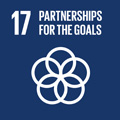- Docente: Luca Vittuari
- Credits: 12
- SSD: ICAR/06
- Language: Italian
- Moduli: Luca Vittuari (Modulo 1) Antonio Zanutta (Modulo 2) Antonio Zanutta (Modulo 3)
- Teaching Mode: Traditional lectures (Modulo 1) Traditional lectures (Modulo 2) Traditional lectures (Modulo 3)
- Campus: Bologna
-
Corso:
First cycle degree programme (L) in
Civil Engineering (cod. 8888)
Also valid for First cycle degree programme (L) in Chemical and Biochemical Engineering (cod. 8887)
-
from Feb 18, 2025 to Mar 21, 2025
-
from Mar 27, 2025 to May 16, 2025
-
from May 20, 2025 to Jun 13, 2025
Learning outcomes
At the end of the course, and after passing the final assessment test, the student possesses fundamental knowledge of geodesy elements, reference and coordinate systems. He has acquired the theoretical and practical basis for the use of topographic instrumentation in measuring angles, distances and height differences and for the adoption of precision satellite positioning techniques. Knows the methods of statistical treatment of observations made according to simple and medium complexity network detection schemes. Furthermore, he/she knows the introductory concepts of the theory of cartographic representations, in order to be able to create and use cartographic documents at different scales.
Course contents
Geodesy: equipotential surfaces and the geoid; the geometry of the rotation ellipsoid. Topographic field and spherical field. Theorems of operational geodesy. Coordinate systems and transformation between ellipsoidal, geocentric and local geodetic Cartesian coordinates. Geodetic reference systems (defined according to international standards and locally adapted), elevation systems and elevation differences and their adoption in Europe.
Statistical treatment of observations: gross, systematic and random errors; probability distributions: normal distribution; estimation of the characteristic parameters of a distribution, confidence intervals; variance propagation; principle of least squares.
Adjustment of observations with the method of indirect observations. Verification of the results and precision achieved.
GNSS satellite positioning techniques: architecture of global positioning systems, signal structure, observable differentiation techniques. Design and execution of a survey in post processed, RTK and NRTK modes. Example of use of open source programs for data processing in RINEX format, analysis of the precision achievable with the different methodologies.
Modern surveying instruments: principles of operation and use of digital auto-levels, total stations, GNSS receivers, 3D scanning lasers.
Elementary survey schemes: measurement of height differences, azimuthal and zenith angles, distances. Processing of campaign data. Methods of surveys framing, intersection, polygonal, modern celerimeasurement. Precision geometric leveling from the medium. Simultaneous and reciprocal trigonometric leveling and from one end, precision differential trigonometric leveling, influence of refraction. Examples of networks for territory monitoring (control measures of ground movements, landslides, analysis of Digital Terrain Models and surfaces obtained through photogrammetric surveys, TLS or LiDAR, GNSS networks or total stations for periodic or continuous monitoring ).
Examples of topographical control measures for buildings (control networks of structures and infrastructures, topographical measures used during testing).
Methods for creating and adjusting altimetric, planimetric, 3D and GNSS networks
Cartographic representations: classification of representations and map theory. The conformal representation of Gauss and its geodetic use. The official Italian cartography, regional and municipal cartography; geographical and kilometric networks. Introduction to digital and numerical cartography, examples of use of open source GIS software.
Readings/Bibliography
The teaching material presented in class will be made available to the student by the teachers in electronic format via the university service: "Virtuale", https://virtuale.unibo.it/ Username and password are reserved for students enrolled at the University of Bologna.
For descriptions of topographic instrumentation and traditional topographic survey techniques: Renato Cannarozzo, Lanfranco Cucchiarini, William Meschieri, (2017) Volume two: Misure, rilievo, progetto. Per costruzioni, ambiente e territorio.
Teaching methods
The course is divided into theoretical lessons, classroom exercises and practical exercises.
The objective of the practical lessons is twofold:
- make the student familiar with the detection equipment;
- develop in the student the ability to adapt detection schemes to real operating conditions.
Assessment methods
The learning of the Course is verified through a final exam, which ascertains the acquisition of the expected knowledge and skills by carrying out a written test and an oral integration without the help of notes or books.
The written assignment consists of two open questions worth 15/30 each. The student must answer the questions by writing with a pen or marker on white paper. Each sheet must be numbered and must bear the candidate's name, surname and student number.
The written test lasts 70'.
The oral exam will be held at the end of the written test following the order of registration on the list on Almaesami.
At the time of the test, students must have an identification document (identity card or driving license or passport) and badge with them, so that they can show them to the commissioners.
The oral test consists of an in-depth study aimed at ascertaining the knowledge acquired.
Passing the exam will be guaranteed to students who demonstrate mastery and operational ability in relation to the key concepts illustrated in the teaching.
Teaching tools
During the course, topographic instruments will be described and used, such as: precision and construction site auto-levels, theodolites, total stations, geodetic-type GNSS receivers, 3D scanners. The course is divided into theoretical lessons, classroom exercises and practical exercises.
Office hours
See the website of Luca Vittuari
See the website of Antonio Zanutta
See the website of Antonio Zanutta
SDGs




This teaching activity contributes to the achievement of the Sustainable Development Goals of the UN 2030 Agenda.
